

HomePage | Optical Illusions | War Stories | QBasic | Dads Navy Days | Bristol | Bristol, USA | Bristol, Canada | Terre Haute | Miscellany | Web Stuff | About Ray | Site Map | Site Search | Messages | Credits | Links | Web Rings
Bristol | Place Names | Legends, Pre-history and the Romans | Birth of the City | 1100 Onwards | Voyages | 1450 Onwards | 1650 Onwards | 1700 Onwards | Riots | The Blitz (Page 1), (Page 2) | The Castle (Page 1), (Page 2), (Page 3), (Page 4), (Page 5), (Page 6) | Blaise Castle (Page 1), (Page 2) | Castle Green (Page 1), (Page 2) | Union Street | Broadmead | The Old City (Page 1), (Page 2), (Page 3), (Page 4) | Christmas Steps (Page 1), (Page 2) | St. Mary Redcliffe (Page 1), (Page 2), (Page 3) | College Green (Page 1), (Page 2) | King Street (Page 1), (Page 2) | Clifton (Page 1), (Page 2) | Avon Gorge (Page 1), (Page 2), (Page 3) | Hotwells (Page 1), (Page 2) | City Docks (Page 1), (Page 2), (Page 3) | Bedminster (Page 1), (Page 2), (Page 3), (Page 4), (Page 5), (Page 6), (Page 7) | Old Market (Page 1), (Page 2) | St. George (Page 1), (Page 2) | Temple (Page 1), (Page 2), (Page 3) | Arno's Vale Cemetery (Page 1), (Page 2) | Brislington | @ Bristol | Oldest House | I. K. Brunel (Page 1), (Page 2) | Ma Pugsley | Yeamans | Boundaries (Page 1), (Page 2) | Photography | Exhibition (Page 1), (Page 2) | Lead Working | Historical Perspective | Virtute et Industrial | Other Sites | Bibliography (Page 1), (Page 2) | Help Wanted (Page 1), (Page 2), (Page 3)
Bristol - Clifton (Page 2)
St. Andrew's Church, Clifton :-
This page started out as an enquiry from Tracy in Somerset who wanted photographs of St. Andrews Church, Clifton, Bristol before it was bombed/demolished after the war. All that is now left of the church is a memorial stone.
This following was taken from ChurchCrawler, which contains a lot more about the church...
It is first mentioned in 1154 when it was given to the Abbey of St Augustine (now Bristol Cathedral). The medieval church was not large, and was partially rebuilt in 1654. The first enlargement of the church that is recorded was in 1716 when a new aisle was added, indicating the growing population of the parish by then. John Wesley preached in the church on Sunday May 13th 1739, and commented afterwards on the "many rich" (people) at the service. The church was enlarged further by a south aisle being added in 1768.
In 1829 the foundation stone of a new church was laid on a site alongside of the old church. It was complete by 1822 and consecrated on August 12th. The architect of the new church was James Foster. At a time when most buildings were being built in Greek or Roman classical imitation, St Andrew's was an odd amalgam of Gothic and Classical forms.
[Something wrong with the dates above? Foundation stone laid in 1829 but completed in 1822? I think the 1829 date should actually be 1819.]
On the night of November 24th 1940, the church fell victim to the severe bombing of Bristol by the Luftwaffe. It remained a shell for several years, the ruins being finally demolished in 1956. It had been hoped to save the tower but it was found to be unsafe and soon followed the rest of the church into oblivion. The pretty churchyard survives, together with the path through it called Birdcage Walk. The tombs are in a poor condition sadly. The site of the church is marked by an inscribed stone set in the lawn. The very base of the walls survive in part. The outline of the medieval church was marked out by hedging to the south. Christ Church became the parish church of Clifton, one of eight churches carved out of the former Clifton parish in the nineteenth century.
Another site that contain images of the church is at West Gallery Churches. The actual web page doesn't work, but the images are still viewable from the directory. The part of the page that is viewable says this about the church...
All but the tower had been rebuilt in 1634, because of dilapidation. Enlargement followed in 1768. In the 1820s this church was replaced by a completely new building slightly to the north of it. Later the original church was pulled down, carted away and buried in a quarry.
After the war the bombed St Andrew's, being largely destroyed, was demolished. Christchurch then became Clifton's parish church.
"A Chronicle of Clifton and Hotwells" by Helen Reid (Redcliffe Press, 1992, ISBN 1 872971 36 9) says that...
As Clifton's housing development gradually spread over the fields and onto the Downs, the place began to take on a firmer identity. There were Clifton ways of doing things.
This was particularly true of the church. Originally religion centred on the old parish church of St. Andrew, which thanks to society at the Hotwell, became fashionable in the eighteenth century. Wesley preached there in 1754 and wrote "seeing many of the rich of Clifton Church, my heart was pained for them and was earnestly desirous that some even of them might enter into the Kingdom of Heaven".
By the turn of the nineteenth century the church was too small, and it was rebuilt in 1822, the capital being raised by renting pews or granting them in perpetuity to those who contributed a certain sum. Since the new church held 2,000 people, a lot of money was involved.
For status-loving Cliftonians, your own pew was a must — one went for auction in 1836 at £190. One person owned 13 pews and rented them out, and seats were often sold with houses, being mentioned in house particulars. "Pew mongering" was still going strong in 1873 when "a pew in the parish church, best situation facing the pulpit, £88" was advertised.
Private pews caused ill feeling because they kept out visitors and servants (there was a plan to build a gallery for them) and in the end those against it gave their pews up, and church officials eventually bought most of them up for £3,000.
By 1884, 700 out of 2,000 sittings were free but even in 1940 there was still one proprietory pew left. "I know of nothing more calculated to send men Romewards than this scandal," said one enraged member of the congregation.
Since it was obvious there would never be enough seats for visitors and residents, let alone their servants, another new church had to be built and in 1841, Christ Church was consecrated. It cost £10,500, and was enlarged in 1859, and side aisles added in 1885.
Helen Reid's book also contains snippets of information gleaned from the newspapers of the time. This comes from the pen of John Leech writing in the 1840's about St. Andrew's in The Churchgoer...
The Poor Man at His Gate
Clifton church is not to any extent the church of the parishioners; the rich and the non-resident occupy the reserved seats and those few that are nominally free are filled with powdered footmen. It is not the church of a poor man, he has no business there in that atmosphere of eau de Cologne, bouquet de la Reine, where the glitter of gilt-edged prayer books and the rustle of brocades present sounds and sights extraordinary to humble comprehension. Dowagers young and old finely clad, nodding plumes and flowing dresses swept on and still the expectants stood by the porch.
This comes from Felix Farley's Journal on the consecration of the rebuilt parish church of St. Andrew, 1822...
Holier Than Thou
An immense multitude of spectators of al ranks and descriptions assembled and the scene wore a most appealing character. The doors opened at 10.30am for holders of 4s. tickets. Afterwards the Lord Bishop and the Dean together with many of the clergy partook of a capital dinner at the Clifton Hotel during and after which the utmost harmony and gentlemanly deportment prevailed.
Helen Reid also found some articles about the church during and after the bombing...
Clifton Parish Church Bombed, November, 1940
Two hundred to three hundred people sheltered in the crypt there. During the November 24/25 raid they sang hymns to a piano and violin accompaniment until the building above became too hot for safety. The next day a notice went up on the ruins "Cast down but not destroyed."
"I remember walking up Constitution Hill a day later after the bombing of Clifton Parish Church on my way to school at La Retraite and crying as I saw the smouldering remains of the church."
Dangers of Clifton
Sir, Your reader protests against the proposal to demolish the war bombed Clifton Church on the ground that children can climb up to the top of the tower and risk falling. He dismissed this reason as "nonsense almost amounting to hypocrisy" and describes the children as "probably fictitious". I notice that the protestor lives in Sea Mills Park. I live next door to the church.
Arthur Bristol, Bishop of Bristol, bishop's House, Clifton (Evening Post, October 1952)
The following images come from the above sites and my own collection of books and articles. Unfortunately, I don't own the copyright to them.
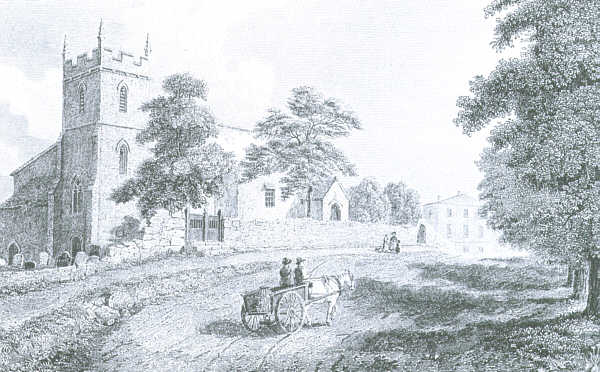
St. Andrew's Church in a still rural Clifton
This appears to be the church of 1654
In 1822, the new church was built and this one was demolished
("A Chronicle of Clifton and Hotwells", Helen Reid, 1992, plate 41)
(Engraving by J. Skelton)
The older St. Andrew's with the 1822 church alongside
(from ChurchCrawler)
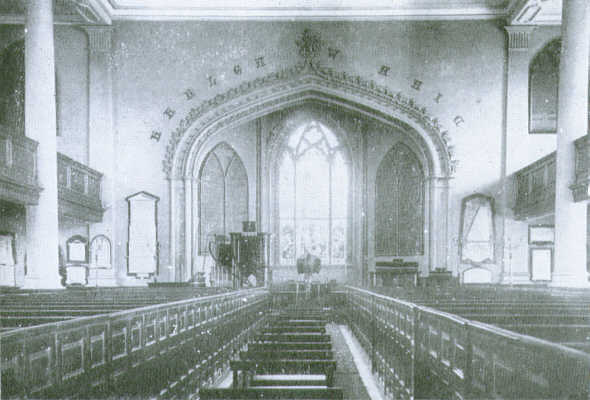
Interior, St. Andrew's Church, Clifton - 1822
This church replaced several others built on the same site from medieval times
(from "Bristol in the 1890's", Reece Winstone, 1973, 3rd edition, plate 156)
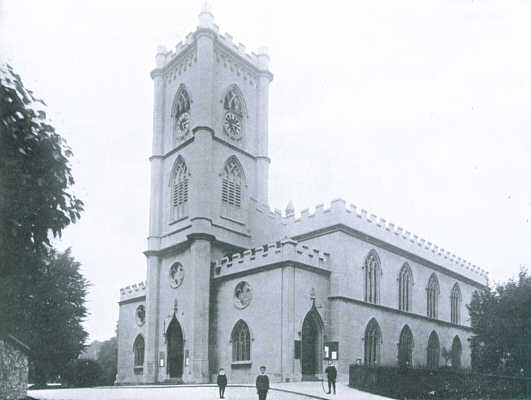
St. Andrew's Church, Clifton - circa 1900
This third church replaced the second one of 1654.
Bombed during WWII, the tower was finally demolished in 1954.
(from "Bristol as it Was, 1914 - 1900", Reece Winstone, 1957, plate 40)
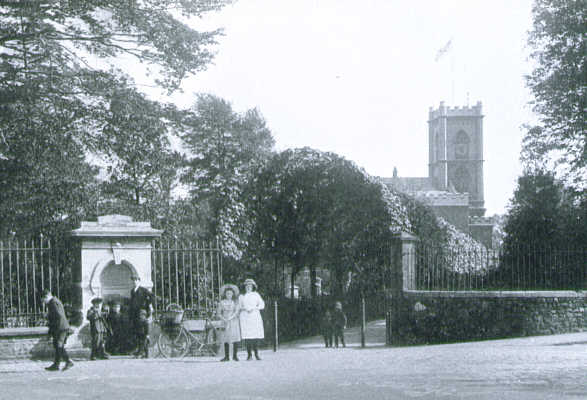
St. Andrew's Church, Clifton seen beyond Church Walk - circa 1913
Church Walk is more popularly known as Birdcage Walk
(from "Bristol as it Was, 1914 - 1900", Reece Winstone, 1957, plate 39)
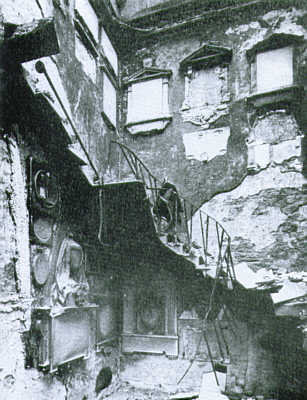
St. Andrew's Church, Clifton - 25th November 1940
Built 1819 - 1822, bombed 24th November 1940
(from "Bristol Blitzed", Reece Winstone, 1976, 2nd edition, plate 120)
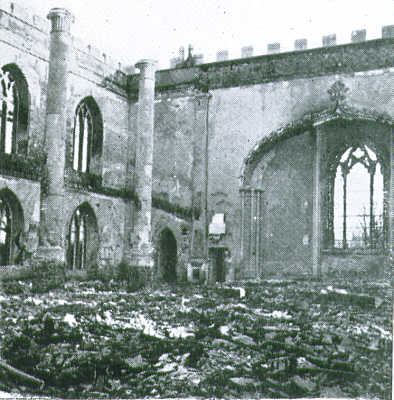
St. Andrew's after the Blitz
(from "Bristol Bombed", F. G. Warne & the Bristol Development Board, 1943, page 38)
Another view of the wrecked interior
(from ChurchCrawler)

St. Andrew's Church from Lime Walk
("A Chronicle of Clifton and Hotwells", Helen Reid, 1992, plate 100)
Bristol | Place Names | Legends, Pre-history and the Romans | Birth of the City | 1100 Onwards | Voyages | 1450 Onwards | 1650 Onwards | 1700 Onwards | Riots | The Blitz (Page 1), (Page 2) | The Castle (Page 1), (Page 2), (Page 3), (Page 4), (Page 5), (Page 6) | Blaise Castle (Page 1), (Page 2) | Castle Green (Page 1), (Page 2) | Union Street | Broadmead | The Old City (Page 1), (Page 2), (Page 3), (Page 4) | Christmas Steps (Page 1), (Page 2) | St. Mary Redcliffe (Page 1), (Page 2), (Page 3) | College Green (Page 1), (Page 2) | King Street (Page 1), (Page 2) | Clifton (Page 1), (Page 2) | Avon Gorge (Page 1), (Page 2), (Page 3) | Hotwells (Page 1), (Page 2) | City Docks (Page 1), (Page 2), (Page 3) | Bedminster (Page 1), (Page 2), (Page 3), (Page 4), (Page 5), (Page 6), (Page 7) | Old Market (Page 1), (Page 2) | St. George (Page 1), (Page 2) | Temple (Page 1), (Page 2), (Page 3) | Arno's Vale Cemetery (Page 1), (Page 2) | Brislington | @ Bristol | Oldest House | I. K. Brunel (Page 1), (Page 2) | Ma Pugsley | Yeamans | Boundaries (Page 1), (Page 2) | Photography | Exhibition (Page 1), (Page 2) | Lead Working | Historical Perspective | Virtute et Industrial | Other Sites | Bibliography (Page 1), (Page 2) | Help Wanted (Page 1), (Page 2), (Page 3)
HomePage | Optical Illusions | War Stories | QBasic | Dads Navy Days | Bristol | Bristol, USA | Bristol, Canada | Terre Haute | Miscellany | Web Stuff | About Ray | Site Map | Site Search | Messages | Credits | Links | Web Rings
This page created 31st January 2005, last modified 11th December 2005